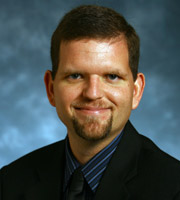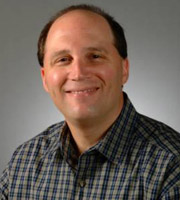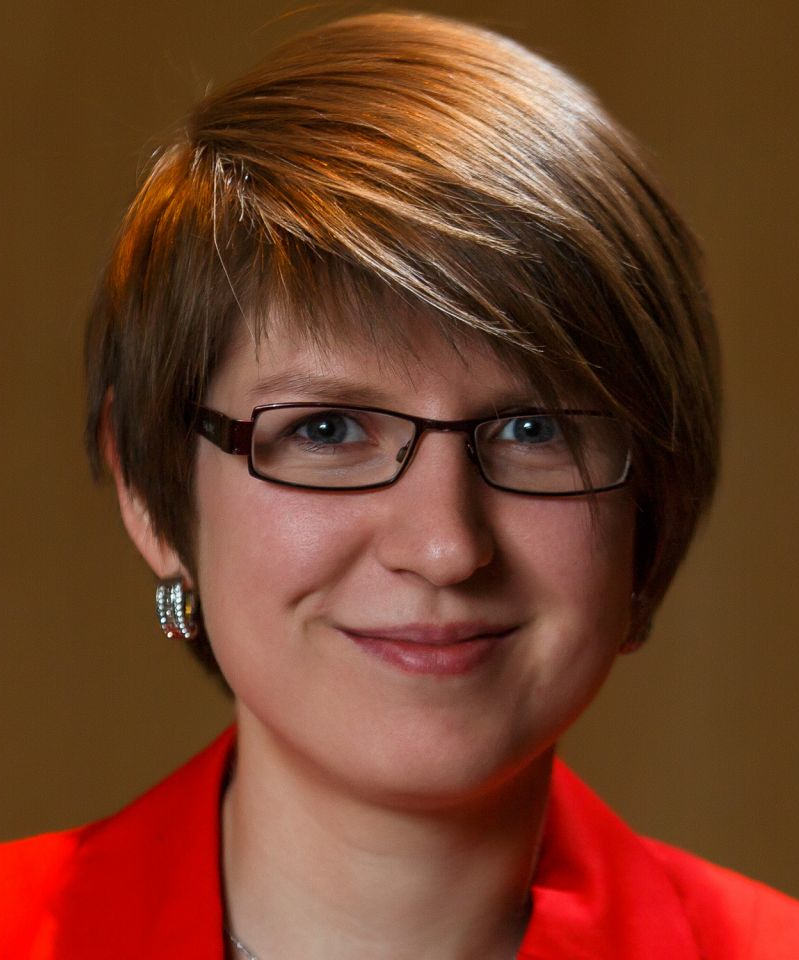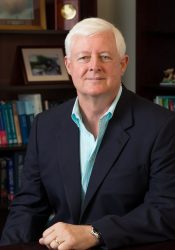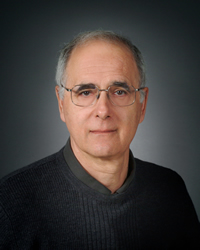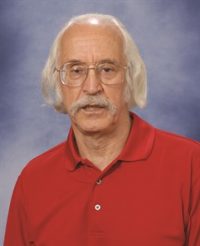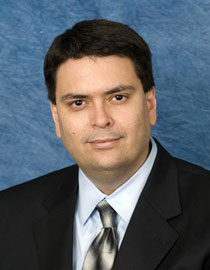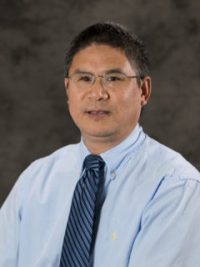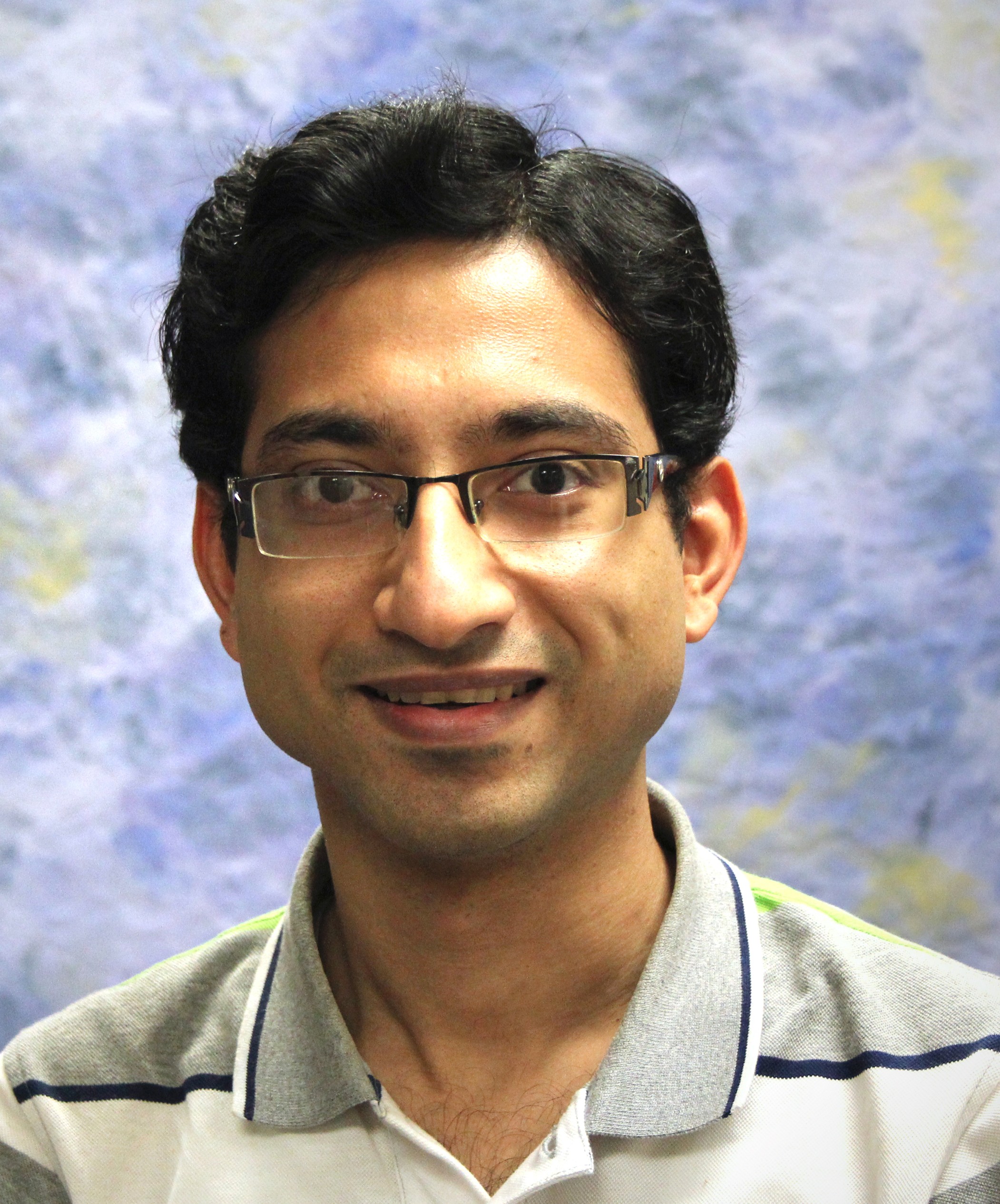Department of Statistics
The Department of Statistics currently occupies approximately 60 offices on the fourth floor of the Blocker Building. Graduate students typically occupy a shared office, with those students working as research assistants to permanent faculty sharing an office with only one other student, and located near their major professor. Postdoctoral researchers generally share an office. The trainees will be housed in a series of offices within the Department of Statistics.
All student and postdoctoral researcher offices have at least one computer terminal, and typically have multiple Ethernet drops. The College of Science has agreed to provide an integrated computing environment so that trainees can access the same disk space/files whether they are in their Statistics or Nutrition offices. We anticipate that all program participants will be equipped with a notebook computer.
The computing environment within the Department of Statistics is excellent. Our computer network is supervised by Dr. Henrik Schmiediche, a long-time employee of the Department who has a Ph.D. in Statistics. Not counting computer laboratories and systems dedicated to distance learning, the Department of Statistics operates a heterogeneous network of over 50 Solaris, Linux, Mac and Windows computers. The majority of computationally intensive tasks are performed on five publicly available UltraSparc 1 and 10 systems with 256MB or 512MB RAM each. Individual faculty operate an additional ten multi-user Ultrasparc and Linux systems capable of sharing file and CPU resources over the network. The major systems in our department are linked by ATM or 100 megabit ethernet connections. Four additional high-end Linux systems (Pentium 700’s) have been purchased for public use and were added to the Network at the end of 1999. A powerful dual Pentium file server and an additional 2 high end Athlon systems with 768MB of RAM dedicated to simulations were added in March, 2000. The following Statistical software is available to all students and faculty on the Unix system: the latest versions of SAS, Splus, Mathematica, Matlab and Stata.
Human Nutrition Laboratories
Environment – Contribution to Success
The facilities and other resources at Texas A&M provide the Nutrition research team all the necessary infrastructure to undertake and complete the proposed research. These resources are complemented by state-of-the-art university core facilities: including flow cytometry, fluorescence microscopy, laboratory animal resources, metabolomics and genomics-sequencing resources. In addition, the intellectual environment at Texas A&M has a plethora of well-funded research faculty in the Life and Physical Sciences. These facilities (see below for details), together with the other performance sites, collectively provide a robust, world class scientific ethos that is conducive to the successful completion of the project.
Facilities:
Laboratory. Investigators are housed in the Cater Mattil Building. Typical labs consist of a main laboratory (2,200 sq. ft.), which houses the major equipment, and a smaller lab of approximately 400 sq. ft. This BSL2 laboratory space is completely equipped for tissue culture, including a biohazard laminar flow hood, three CO2 incubators, and multiple Nikon fluorescence microscopes. The major analytical equipment housed in the PI’s laboratory includes: an inverted Nikon Eclipse Ti wide-field fluorescence microscope equipped with a Photometrics CoolSNAP HQ2 monochrome digital CCD, Lambert Instruments FLIM Attachment (LIFA) camera and a Nikon DS-Fi1 color camera. The system is also equipped with a cooling system composed of a CL-100 Bipolar Temperature Controller (Warner Instruments), a TB-3 CCD Thermal Insert (Warner Instruments) and a LCS-1 Liquid Cooling System (Warner Instruments). Other microscopes in the lab include a Keyence BZX inverted fluorescence phase microscope, Nikon TE300 inverted fluorescence scope equipped with a Nikon Digital color DS-2Mv color camera, a Nikon Eclipse 55i upright microscope equipped with Photometrics Cool snap EZ monochrome and Nikon color Digital DS-U2 cameras, and a Nikon AZ100 long working distance multizoom epi-fluorescence microscope equipped with a Hamamatsu C11440 monochrome digital camera. Each system is equipped with Nikon NIS Elements imaging workstations. Other major analytical equipment housed in the PI’s laboratory includes: a Seahorse X24 Extracellular Flux Analyzer (Seahorse Bioscience) with CO2-free incubator, an Amnis FlowSight imaging flow cytometer equipped with four lasers which provides 12 detection channels, a Biorad S3e Cell Sorter, an Applied Biosystems Quant Studio 3 real time PCR unit, DeNovix DS-11 spectrophotometer, Invitrogen Qubit 2.0 Fluorometer, Agilent Bioanalyzer, Nanodrop spectrophotometer, and a Molecular Dynamics GenePix scanner. Lipid analyses are conducted on an Agilent 6890N gas chromatograph with 5975B electron impact mass spectrometer. A biochemical suite is equipped with a Biorad Bioplex (Cytokine) 200 Beadstation and Bioplex II wash station, UV-visible Molecular Devices Spectra Max 190 spectrophotometer, Spectra Max Gemini EM fluorometer, Spectra Max Luminometer, table-top centrifuges, Accuri C6 flow cytometer, cell sonicator, electrophoresis equipment (vertical, horizontal, slab), -80° C freezers, ovens, cold cabinet, microfuges, Savant Speed Vac system, microwave oven, and a BioRad Chem-Doc imaging system, and BioRad Transblot Turbo transfer system. In addition, the Chapkin lab houses 2 Dell Precision T7500 workstations (12 CPU Cores, 96 GB RAM and 3 – 2 TB hard drives in RAID5) and 1 Dell Precision T7600 workstation (16 CPU cores, 128 GB RAM, 256 GB SSD and 3 – 3 TB hardrives). This computer runs STAR or SNAP for DNA sequence alignments and assemblies. Data are stored on a Synology DS412 with 4 – 3 TB drives in RAID5. This is backed up weekly to a Synology DS412 in another building. IBM-compatible and Macintosh personal computers are available. Terminals have editing, graphics, IPA/Ingenuity pathway and statistical capabilities. The lab also has access to the Texas A&M Supercomputing Center.
In addition, Dr. Chapkin is co-Director of the Quantitative Biology Core in the Center for Translational Environmental Health Research (CTEHR). For bioinformatics analysis the core has several high-performance computer clusters and the CLC Genomics and Ingenuity Workbenches for sequence and pathway analyses. The core (a) coordinates gene expression experiments utilizing deep sequencing, and microarray technology; (b) provides access to Illumina sequencing systems, as well as Real Time PCR training, (c) performs DNA and RNA quality assessment; (d) compiles and displays sequence/expression data, and (e) has acquired and continues to acquire or develop new technologies to enhance gene mutation and global gene expression analysis capabilities. The core provides DNA and RNA sequencing-related bioinformatics and systems biology expertise to principal investigators and will assist with statistical, bioinformatics, and systems biology-based analyses.
Animals. Specific pathogen-free breeding pairs (on C57BL/6 background) have been obtained Lgr5-GFPCreERT2 (a gift from H. Clevers). In addition, Msh2f/f and tdTomf/f were purchased from Jackson Labs. Weanling mice (male and female) will be tagged and housed up to 5 (same sex) per cage and maintained at 250 C with a 12h light/dark cycle. All experimental procedures will be approved by the Institutional Animal Care Committee of Texas A&M University consistent with the Association for the Assessment and Accreditation of Laboratory Animal Care (AAALAC) guidelines. The animal care program is accredited by AAALAC. All breeder mice will be housed at the Texas Institute for Genomic Medicine (TIGM) on the Texas A&M campus (College Station, TX). This is a state of the art animal facility, which is supervised by veterinarians and there is always a veterinarian at the facility or on call. Animals are checked several times per day. After animals for individual studies are moved to the Comparative Medicine Program Building Vivarium (College Station), they will be closely supervised, and any animals showing disease or sickness will be attended to by the veterinarians of the Comparative Medicine Program.
Clinical. Not applicable.
Computers. The Chapkin lab houses 3 Dell Precision workstations; T7500 Workstation (12 CPU cores, 96 GB RAM, 1- 1TB hard drive and 4 – 2TB hard drives with 3 in RAID5 with 1 backup), T7600 workstation (16 CPU cores, 128 GB RAM, 3 – 3TB hard drives in RAID5) and T7910 Workstation (22 CPU cores, 128 GB RAM, 4 – 4TB hard drives in RAID5). These computers primarily run STAR and HTSEQ for DNA/RNA sequence alignments and analysis. The T7600 Workstation runs Bowtie2, TopHat2, Salmon, and Sailfish. Data are stored on a Synology DS1815 with two DX 513 extensions, and a total of 18 – 6TB drives in RAID5. In addition, data are backed up to a Synology D1815 with two DX513 extensions in another building. IBM-compatible and Macintosh personal computers are available. Terminals have editing, graphics, IPA/Ingenuity pathway and statistical capabilities. The lab also has access to the Texas A&M Supercomputing Center.
Office. Offices are equipped with a phone, a Mac computer with Internet access, desk, and several file cabinets and bookshelves. The Department of Nutrition & Food Science has a well-staffed office with receptionist, computer systems specialist, electronics technician, grants manager, machinist and accountant. Photocopy, fax, voice-mail, internet, and e-mail are available.
Other:
Texas A&M Facilities/Resources
- The Laboratory Animal Research and Resources (LARR) Facility at Texas A&M University is comprised of a centralized, full climate-controlled building containing 51 animals rooms and approximately 38,000 gross sq. ft. This facility is AAALAC accredited by virtue of its association with the College of Medicine. One of the special features of this facility include HEPA filtered incoming air for all animals rooms and an infectious disease suite of six animal rooms and two laboratories with appropriate safety cabinets. Other key features include:
- Twenty-three isolation cubicles located in the new wing. These units are individually supplied with approximately 25 air changes per hour of HEPA filtered air, are individually temperature controlled, alarmed for high temperature conditions, and individually exhausted. Each unit can be adjusted to provide either positive or negative pressure relative to the room.
- A complete survival surgical support area, which meets all current standard for non-rodent species.
- A central cage-washing facility equipped with a Girton tunnel washer, a Girton cage and rack washer, a Girton bedding dispenser, an autoclave, a bottle filling station, and a rack flushing station.
- Six procedural rooms for use by investigative staff for minor, short-term usage.
- A staff of 3 laboratory animal trained veterinarians, 5 technicians, and approximately 20 student workers.
Investigators also have access to the Germ-Free Mouse Facilities as part of the Center for Integrated Microbiota Research at Texas A&M University Health Science Center. This facility is designed to operate and manage germ-free rodent colonies for immunological, gut ecological, physiological, and cancer research. Specifically, this facility has:
- Vivarium space: approximately 1,500 square feet of newly built (2011) dedicated SPF vivarium space.
- Germ-free rodent isolator systems: multiple germ-free rodent isolator systems for breeding and germ-free/gnotobiotic and microbiota humanization/defined-flora association experiments.
Quad-unit Germ-free Isolators: Flexible plastic isolators with “glove-box” access are essential to the creation, maintenance, and utilization of a germ-free environment for gnotobiotic animal research. Quad-unit isolators (2 top, 2 bottom units, 24 x 24 x 24 in. each) maximize facility space and minimize labor after individual investigator experiments are initiated because of the requirement that ongoing experiments be isolated from the general germ-free colony isolators. This is a critical issue as each isolator used for an experiment must be removed from rotation and re-sterilized. Each unit can be used for an independent experiment, removed for re-sterilization without affecting the other units.
Double-unit Germ-free Isolators: Flexible plastic isolators with “glove-box” access are essential to the creation, maintenance, and utilization of a germ-free environment for gnotobiotic animal research. Double-unit isolators (1 top, 1 bottom unit, 60 x 24 x 24 in. each) are used for maintaining the general germ-free colony, and for expansion breeding of genetic lines of mice (knock-out, transgenic) tasks and for maintaining large cohorts of unique microbiota-associated mice in numbers too large for quad-units. - Anaerobic microbiology lab: a dedicated anaerobic microbiology lab suite for microbiota and anaerobic species isolation, growth, manipulation, and experimentation. Consists of:
- a 2-person Coy vinyl anaerobic chamber with all accessories and airlock;
- a biosafety cabinet;
- aerobic and anaerobic culture incubators;
- high temperature oven for palladium catalyst regeneration;
- dedicated refrigeration for media and biological reagent storage;
- access to washroom, central autoclave facility, and microbiological media preparation stations.
- Lyophilizer: a multi-sample freeze-dryer (lyophilizer) to prepare biological samples associated with the Core (microbiota, tissues, nucleic acids, metabolites) for archival storage.
Support services available to all of the investigators’ laboratories include materials characterization facility for microfabrication (http://www.chem.tamu.edu/cims/index.html), flow cytometry and protein characterization, mass spectrometry, and machine shop. This multi-user facility is also equippned with two Leica confocal microscopes.
- Protein Chemistry Laboratory (com). This multi-user facility has several mass spectrometers which his students have been trained on. This includes a QExactive Orbitrap (Thermo) mass spectrometer for multiple reaction monitoring/MS-MS studies and an Exactive Orbitrap (Thermo) for routine MS studies.
- Image Analysis Research Resource Core Laboratory and Equipment: The College of Veterinary Medicine & Biomedical Sciences operates an Image Analysis Laboratory at Texas A&M. The imaging core is subsidized by the NIEHS Center for Translational Environmental Health Research (http://ctehr.org, CTEHR- P30ES023512, Chapkin Deputy Director). Major equipment includes:
– Zeiss LSM 780 NLO Confocal/multiphoton microscope equipped with an AxioObserver Z1 inverted microscope, Coherent Chameleon Ultra Ti:Sapphire laser and Verdi pump laser, laser lines including 405, 458, 488, 514, 561, 594, and 633 nm, 34 channel spectral GaAsP detector for analysis of spectral signatures and separation of overlapping spectral emissions, motorized stage, incubator system with temperature and CO2 control, and Zen software for Physiology, FRET, and FRAP analyses. The system is also equipped with ISS fluorescence lifetime imaging (FLIM) hardware and software.
– Zeiss ELYRA S.1 (SR-SIM) Super Resolution Microscope equipped with an AxioObserver Z1 inverted microscope, laser lines including 405, 488, 561, and 643 nm, incubator system with temperature and CO2 control, and Zen Software. The ELYRA S.1 system can achieve a lateral resolution of up to 100 nm and an axial resolution of ~ 200 nm through the use of SR-SIM.
– Zeiss Z820 workstation with 192 GB RAM equipped with Zen black and Zen blue software for LSM 780 and ELYRA S.1 image analysis.
– Zeiss Laser TIRF3 Total Internal Reflection Fluorescence Microscope with incubator and equipped with multiple laser lines including 405, 488, 514, 561 nm, and 635 nm mounted on the modular AxioObserver microscope.
– Zeiss Stallion DDI digital imaging system with Intelligent Imaging Innovations (3I) software is supported by a fully motorized Zeiss Axiovert 200 MOT with fluorescence and DIC optics and an ApoTome slider for optical sectioning. The system has been optimized for live cell imaging experiments including 2D, 2D time-lapse, 3D, rapid 3D time-lapse (4D), FRET, fluorescence deconvolution, and high speed ratio imaging.
– Veritas Laser Capture Microdissection System for extraction of DNA, RNA or protein with both UV laser cutting and laser microdissection.
– Digital Imaging and Image Analysis Workstation consisting of a Zeiss Axioplan 2 research microscope with a -Zeiss Axiocam HR high resolution color CCD camera with Zeiss Axiovision and a variety of image processing software programs.
– BioTek Synergy 4 Fluorescence/Absorbance/Luminescence Microplate Reader, supporting flexible kinetic assays with top and bottom probes, a fluorescence excitation and emission range of 300-635 nm and 350-700+ nm respectively, continuous wavelength absorbance measurements and probe diameters of 5, 3, 1.5 and 1.0 mm with full plate reading (6 to 384 well) in < 30 sec, temperature control from ambient +6 to 50°C.
– FEI Company Morgani268 Transmission Electron Microscope, an advanced, completely digital TEM that operates at 100kV is controlled by a user interface which features fully embedded digital imaging and film recording with one CCD camera that is interchangeable at two microscope positions.
– Cell Culture Facility equipped with CO2 and/or O2 water-jacketed incubators, laminar flow tissue culture hood and general equipment needed for cell culture manipulations.
- Flow Cytometry Core Center Equipment: The University operates a Cell Analysis Facility, which includes a 13-parameter BD FACSAria II cytometer/sorter, a 4-color BD FACSCalibur and a Beckman Coulter MoFlo Astrios equipped with three lasers and 11 fluorescence detectors.
- Texas A&M Integrated Metabolomics Analysis Core (IMAC) Facility. This university facility is equipped with 3 state-of-the-art mass spectrometers for untargeted and targeted analysis. These are a Thermo QExactive Plus coupled to a UHPLC for high resolution and accurate mass studies and untargeted metabolomics, a Thermo TSQ Quantiva coupled to a UHPLC for targeted and quantitative metabolomics, and a TSQ 8000 Evo GC mass spectrometer for both untargeted and targeted analysis. This facility is staffed with 2 scientists and a facilities manager. In addition, Dr. Chapkin is on the user committee for the Laboratory of Biological Mass Spectrometry and has full access to these facilities. Among the instruments located in this facility that is relevant to this proposal is a Thermo Fusion mass spectrometer that can be used for high-resolution identification and structural characterization of metabolites. Dr. Chapkin also has full access to a ABSIex Qtrap 3200 as part of his Departmental user facility.
- Intellectual/Collaborative Resources. The expertise of the funded investigators in the described research environments is complementary to the objectives of the training grant.
Bioinformatics / Department of Electrical Engineering
Although there are substantial computing resources of the Department of Electrical Engineering, Dr. Dougherty’s laboratory is essentially self-sufficient. There are six networked Dell workstations, two Sun Ultra 2 workstations, and a number of PCs. A key concern is the parallel computation necessary for nonlinear, distribution-free prediction among combinations of very large classes of genes. Dr. Dougherty is currently collaborating with the Center for Information Technology of the NIH in the ongoing development of parallel hardware and software for algorithm implementation at NIH. The algorithms being developed in Dr. Dougherty’s laboratory can now be run in a distributed fashion on over 100 processors at NIH. Under collaboration now being formalized, NuTec Services of Houston, a computer company with massively parallel processing capability (over 600 SUN nodes), will begin to implement the algorithms jointly developed by NHGRI and Dr. Dougherty’s lab.


